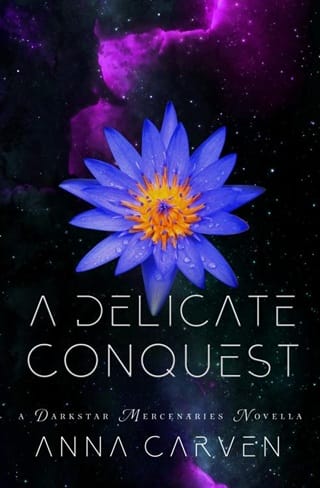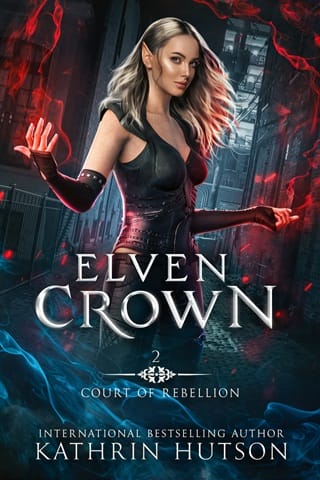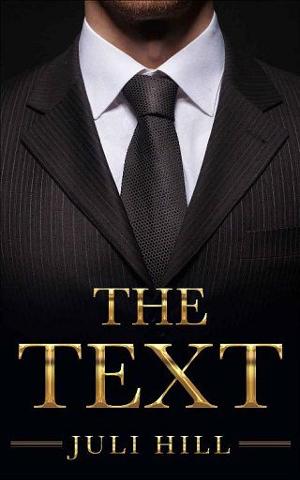CHAPTER 27
INDICTMENT
STATE OF SOUTH CAROLINA
COUNTY OF CHARLESTON
IN THE COURT OF GENERAL SESSIONS NINTH JUDICIAL CIRCUIT
INDICTMENT NO.: 25-CR-6575
STATE OF SOUTH CAROLINA, V. BERNARD KENNETH PALIN, DEFENDANT
At a Court of General Sessions, the Grand Jurors of Charleston County present upon their oath: Breach of Trust, Fraud, and Forgery.
COUNT ONE
brEACH OF TRUST
That BERNARD KENNETH PALIN, in the County of Charleston, State of South Carolina, entrusted with the transfer of funds from the WOLFGANG BERGER FOUNDATION, of a value exceeding one million dollars, did unlawfully and fraudulently breach that trust, with intent to permanently deprive the WOLFGANG BERGER FOUNDATION of said funds, in violation of Section 16-13-230 of the South Carolina Code of Laws, 1976, as amended.
COUNT TWO
Fraud
That BERNARD KENNETH PALIN, in the County of Charleston, State of South Carolina, did unlawfully and willfully devise a scheme to defraud the WOLFGANG BERGER FOUNDATION by means of false pretenses or representations, with the intent to obtain money, property, or other benefit, to which the Defendant was not entitled, contrary to the statutes in such case made and provided, in violation of Section 16-13-240 of the South Carolina Code of Laws, 1976, as amended.
COUNT THREE
Forgery
That BERNARD KENNETH PALIN, in the County of Charleston, State of South Carolina, did knowingly and unlawfully forge or counterfeit a document, instrument, or signature, with the intent to defraud the WOLFGANG BERGER FOUNDATION, and did attempt to use or utter said forged document as true and genuine, in violation of Section 16-13-10 of the South Carolina Code of Laws, 1976, as amended.
Each of the acts described in Counts 1, 2, and 3 constitutes a separate and distinct violation of the laws of the State of South Carolina.
FINDINGS
WHEREFORE, the Grand Jurors say that the Defendant be made to answer to this indictment in a court of law, and that such proceedings be had as are in accordance with the laws of the State of South Carolina.
This indictment is true and correct to the best of the knowledge and belief of the undersigned.
*****
The Charleston Judicial Center Courthouse was in the beating heart of downtown Charleston. Tourists strolled by, admiring the city’s history. Lawyers hustled between cafes and the courthouse. Office workers hurried through the nearby city and county administration buildings.
After months of posturing and months of turmoil, Bernard Palin had his day in the criminal court.
Dressed respectfully in a fitted black suit with a white shirt and a red tie, Palin met Hennessy in the courthouse foyer. They greeted each other with a handshake and spoke about the humidity for a few moments before they turned their attention to the court case. Palin couldn’t stand still, moving from one foot to the other, trying to disperse his growing nerves. The significance of his life choices had become clear—his life of crime and corruption was calling for its fee to be paid.
He followed Hennessy through the courthouse and into the courtroom, settling at the defense table. While Hennessy set up his desk, Palin’s eyes remained locked on the empty jury box. Those seats would soon be filled by people holding his fate in their hands.
After twenty-five minutes, the prosecution team walked into the courtroom. Garrett and his two assistants greeted Hennessy and sat at the prosecution table. They spoke loudly, confidently, and joked with each other. They felt this win was already in the bag.
The bailiff announced Judge Clayton’s arrival. The judge walked into the courtroom, greeted everyone present, and called for any final pretrial motions. When none were presented, he called for voir dire, the jury selection process, to begin.
In some criminal cases, jury selection was a routine exercise, wrapped up within a single session. But the more intricate the case, the more grueling the process became. A fraud and forgery trial demanded precision. The lawyers had to probe every potential juror’s biases, tease out hidden prejudices, and expose every preference. It wasn’t just about finding twelve impartial people—it was about uncovering who could be swayed, who could be trusted, and who might see the world through a lens that worked against their client. Every question mattered. Every answer could tip the scales.
The lawyers probed the potential jurors’ opinions on law enforcement, and dug into their religious views, searching for beliefs that might color their judgment. They asked about their attitudes toward law and justice, pressing to see if they leaned too far toward punishment or forgiveness.
No detail was too small. They inquired about professions, the jobs that shaped their days, and the families that filled their nights. Education mattered, too—what they’d studied, where, and how far they’d gone. Then, they turned to the heart of the case: fraud. Did they understand it? Could they grasp the intricacies of deception in the banking system? How did they feel about office work—the endless spreadsheets, the dull hum of fluorescent lights?
They asked if the jurors had ever donated to a charity, and if so, why. Did they lend a hand to others? How did they celebrate the holidays? These weren’t idle questions; they painted a picture of values and priorities.
Numbers became the next battleground. Accounting, bookkeeping, tax law—did these terms mean anything to them? Did they always pay their taxes on time, or had they ever been tempted to bend the rules? And, perhaps most revealing of all: what did they think of the IRS?
Every hesitation, every inflection, gave the lawyers another piece of the puzzle, another hint at who might decide the fate of their case.
After a day of jury selection, progressing through group after group of potential candidates, the lawyers had their final twelve.
There was a business consultant, a teacher, and a wedding photographer. A retired administration worker, a bus driver, and a nurse. Two construction workers, a gardener, and a hotel manager. The final two selected were retail sales staff, although not known to each other. Two alternatives were also selected—people who would hear the case but take no part in deliberations unless one of the other jurors was excused.
Judge Clayton called an end to the day at five minutes past 5 p.m. Palin didn’t talk much as he exited the court. His nerves were too much.
They returned to the courtroom the following morning for opening statements. The gallery filled behind them. Row after row, people walked into the courtroom, interested in the fraud case that irked the public. Garrett had held to his threat to make it a trial through public opinion. The prosecution released a media statement after jury selection, and every news website ran Palin’s case as their headline story. Hennessy briefly looked at the early comments that morning. They weren’t nice.
“All rise,”
the bailiff called out. “The court is now in session, the Honorable Judge Clayton presiding.”
Judge Clayton walked into the courtroom, sat in his chair, and looked over the crowd.
He expressed his surprise at the full gallery before he greeted the lawyers and confirmed Palin’s name. Once the formalities were completed, he called for the jury members to enter. The sound of the door opening and the shuffle of footsteps filled the room as the jurors entered and took their seats. Clayton waited for the rustling to subside before leaning forward slightly, his voice steady and deliberate as he addressed them. He provided them with preliminary instructions on the case, explaining the relevant legal definitions, the charges, and the responsibilities of the people in the courtroom. Satisfied they understood, he spoke to them about their role and how they were required to leave any biases at the door.
When everything was settled, Judge Clayton invited Assistant Circuit Solicitor Aaron Garrett to begin his opening statement.
*****
“Your Honor, ladies and gentlemen of the jury. My name is Aaron Garrett, and these are my colleagues, Michelle Saltmarsh and Maxwell Smith. Together, we will present the State of South Carolina’s case against the defendant, Mr. Bernard Palin. As prosecutors, we represent the commitment of the Ninth Circuit Solicitor’s Office to combat the devastating effects of fraud in our community.
Mr. Palin is charged with three felonies: Breach of Trust with Fraudulent Intent, Forgery, and Financial Identity Fraud. Mr. Palin is accused of transferring funds from the Wolfgang Berger Foundation. The foundation trusted Mr. Palin to manage their accounting, and instead of transferring the money to help sick and disadvantaged children, Mr. Palin transferred the money into his own account. Over the course of five years, Mr. Palin transferred more than one million into his business bank account. That’s one million dollars that was taken away from sick and disadvantaged children.
That’s right—Mr. Palin stole from sick and disadvantaged children.
Don’t fool yourself and think that because there was no violence, this wasn’t a serious crime—it was. This is one of the worst crimes I have seen. This man, Mr. Palin, put his own personal needs above the needs of sick and disadvantaged children. We cannot let this crime go unpunished. This crime must have real consequences.
The impact of his actions is far-reaching. The stolen money was supposed to go to the children’s hospital to assist in purchasing new equipment. This stolen money was supposed to help families. This stolen money was supposed to help treatments.
Here, in this trial, we have the opportunity to show our great community that these actions are unacceptable.
The Charleston Police Department, led by Sergeant Danielle Young of the White Collar Crime Unit, investigated a tip-off that Mr. Palin was preparing to withdraw the stolen funds and move to Costa Rica to begin a very comfortable retirement.
The first charge, Breach of Trust with Fraudulent Intent, is South Carolina’s version of embezzlement laws. This felony offense occurs when a person who is trusted to manage another person’s property steals money for personal use.
The second charge against Mr. Palin, Fraud, is straightforward. The South Carolina Code of Laws makes it a crime to falsely counterfeit a recording instrument. It also makes it illegal to publish any such false documents. Mr. Palin did both those things.
The third charge is Financial Identity Fraud. This section of the law makes it unlawful for people to use information with the intent to defraud. The creation and use of false information for financial gain are clear elements of Financial Identity Fraud.
Over the coming days, we will present witnesses to you, and they will provide the evidence in this case. Nothing you hear from me now can be considered evidence. This opening statement is given to you to provide a roadmap of what will be shown during this trial.
During this case, you will hear from Sergeant Young, and she will detail the investigation into the crimes, and why they arrested Mr. Palin before he could withdraw the money and flee the country.
You will hear from Mr. Palin’s friend, respected and now retired Judge Clarence Berkley, about why he provided the tip-off. He will testify that Mr. Palin provided him with a copy of the bank statement, which indicates that Mr. Palin was aware of the funds. Judge Berkley will testify that Mr. Palin came to him to help purchase a property in Costa Rica. Mr. Palin was going to use the funds in that account for his own benefit.
You will hear from several of Mr. Palin’s former employees about how they were threatened not to disclose his fraudulent behavior. You will hear from the CEO of the Wolfgang Berger Foundation, who will describe the shock and betrayal she felt when she was told that Mr. Palin was stealing from them. You will hear from forensic accountants describing how Mr. Palin made forged documentation that showed the money was being transferred. You will hear from accounting experts who will detail how Mr. Palin got away with this crime for five years.
Mr. Palin had the intent and motivation to defraud, steal, and trick the Wolfgang Berger Foundation into transferring money into his business bank account.
Mr. Palin does not have the right to defraud charities. He does not have the right to steal from sick and disadvantage children. He does not have the right to destroy our communities.
This was an inexcusable crime, a horrible and tasteless act, and it deserves to be severely punished.
At the end of this case, I will address you again and ask you to consider all the evidence we have presented and to conclude beyond a reasonable doubt that Mr. Bernard Palin is guilty of all three charges.
Thank you for your time.”
*****
During the opening statement, most jurors studied Palin, judging his demeanor to check if he looked capable of performing such a despicable crime. Most of them had already appeared to mark him as guilty, shaking their heads any time his name was mentioned.
During voir dire, Garrett had argued for polite and honest jury members, the type of people who had never stepped a foot wrong in their lives. He needed people who believed everything that was told to them. The type of people who would never question authority. He had five people on the jury that fit that mold. It wasn’t enough, but it was a start.
Hennessy needed the opposite. He needed people who could question the information presented to them, people who could look at the big picture and see the missing elements, people who questioned the government, people who questioned authority, and people who were strong enough to stand up for what they believed in. Hennessy had five of those people on the jury.
The remaining two jurors seemed to be somewhere in between, people who could be easily swayed by the group’s decision.
There were two leaders in the jury box, likely to be on opposite sides, and both seemed ready to fight for what they believed in. The leaders would be Hennessy’s target throughout the case. They would be the people he talked to, made eye contact with, and watched for their reactions.
A leader in the jury room was an invaluable asset.
Jurors were susceptible to herd mentality, as were most normal people. A strong voice in the deliberation room could sway the timid, the uncertain, even the stubborn. One dominant personality, one persuasive argument, and suddenly twelve individual minds became one collective force.
As soon as Garrett finished his opening statement, Hennessy stood, folder in one hand, ready to begin. Garrett sat down, and when Judge Clayton invited him, Hennessy moved to the lectern, opened his folder, and looked at the jury.
With a loud and projecting voice, Hennessy began his statement.
*****
“Ladies and gentlemen of the jury, Your Honor, my name is Joe Hennessy. I’m a criminal defense attorney, and I’m here to represent the defendant, Mr. Bernard Palin.
There’s a saying in aviation that if there’s any reasonable doubt, then there’s no doubt. If there’s any reasonable doubt about safety, whether it’s due to the weather conditions, the mechanics, the navigation, then there’s no doubt. The pilot will not take off.
This trial is the same. If there’s any reasonable doubt at the end of this trial, then there’s no doubt.
If you have any reasonable doubt, you must find the defendant not guilty.
And you will have reasonable doubt because there’s not enough evidence against the defendant.
The legal system in our great country is called an adversarial system. This means that two parties, the prosecution and the defense, present opposing evidence and challenge the validity of the other parties’ claims. Because we’re in an adversarial system, you will hear the defense challenge the prosecution’s evidence. This isn’t a personal attack or an attack on anybody’s reputation. We challenge the evidence because we’re working toward a truthful, reasonable, and fair result in this case. We challenge the evidence because you need the truth to make a decision. And we challenge the evidence because there’s reasonable doubt about what it shows.
There’s no doubt that money was transferred into a bank account other than the intended recipient. That’s not in doubt. That’s a fact. The money was transferred from the Wolfgang Berger Foundation into a bank account managed by the firm, Palin Accounting.
What the prosecution did not tell you in their roadmap is that another person had access to that bank account. Another person was a signatory on that bank account. Another person had the opportunity, and motive, to forge the invoices to the Wolfgang Berger Foundation.
This other person was an employee of Palin Accounting.
They also did not tell you that another person employed by Palin Accounting had the access to change the financial reports. They had the access to change the documentation presented to the Wolfgang Berger Foundation. They had the access to change the financial files.
These two employees were Mr. John Tilly and Mrs. Debra Fisher, and they were having an extra-marital affair for five years.
Why is the timeframe of their affair important? Because that’s also the timeframe for the fraudulent transfers.
When Mr. Palin was arrested, Mr. Tilly and Mrs. Fisher left their respective partners and drove to another state to begin new lives. We don’t know where they drove to because their partners reported them as missing persons. Mr. Tilly and Mrs. Fisher intended to use the money they transferred from the Wolfgang Berger Foundation to begin a new life together.
In addition, in the State of South Carolina, Breach of Trust with Fraudulent Intent is only a crime if the intent is clear. There will be no evidence presented to you to show intent by Mr. Palin. None. That’s because Mr. Palin did not commit this crime.
There are other people who had the means, the motive, and the ability to commit this crime. That will be clear to you at the end of this trial.
And when it comes to the end of this court case, in your role as a juror, you’ll be asked to make a decision based on the evidence, or lack thereof. In making your determination at the end of this case, the only evidence that can be considered is the evidence that has been presented during the trial.
And in making your decision, you must be unbiased. You must be impartial. And above all else, you must be fair.
When this case draws to a close, I will stand before you again and point out how the prosecution has failed to present enough evidence to convince you beyond a reasonable doubt. At that point, you will use your common sense to make a decision. You are the pilots in this trial, and you must remember that if there’s any reasonable doubt, then there’s no doubt.
Your decision must be not guilty.
Thank you for your service to our great justice system.”
 Fullepub
Fullepub 



